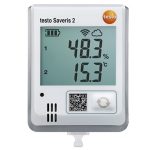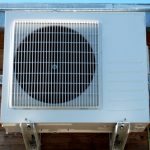Indoor climate meters, wireless temperature monitors and other instruments provide HVAC technicians with the information they need to make educated decisions.
Thanks to digital technology, assessing real-time HVAC performance isn’t difficult. In fact, it’s become so routine that most professionals probably don’t even give it a second thought. Yet, what if HVAC technicians could take their work off-site and onto the desktop?
Getting down to specifics, digital HVAC instruments are part of a revolution called the Internet of Things (IoT). This trend refers to billions of smart devices connecting to the web, allowing them to exchange data with one another and provide a more granular level of information to those who administrate them.
Here’s why the Internet of Things has been compared to the Industrial revolution. http://t.co/z4w5CVJrRK #iot pic.twitter.com/StYCRAQtFV
— SimonPorter (@simonlporter) July 13, 2015
The IoT and HVAC
To clarify: Just because a HVAC tool is digital, doesn’t mean it’s capable of participating in web-based transactions. However, manufacturers are recognising the value in integrating Wi-Fi compatibility into their products.
MarketsandMarkets analysed the growth potential of HVAC controls, which consist of temperature, ventilation, humidity and integrated instruments as well as associated components such as smart vents, sensors and other such accessories. According to the research firm’s estimates, the market for these items is set to grow at a compound annual growth rate (CAGR) of 8.2 per cent from now until 2020.
A number of factors are driving this growth. For homeowners, it’s the desire to achieve deeper control over their lifestyles. Small, mid-sized and large businesses are also interested in gaining greater jurisdiction over their facilities. Imagine an industrial-sized greenhouse that could grow tomatoes year-round thanks to information from a web-connected temperature data logger.
Delivering more comprehensive services
What if an HVAC technician could send refrigerant leak detector data to his or her customer relationship management software after conducting a routine maintenance test? After doing so on a periodic basis, the technician would be able to track the performance of every HVAC system he or she is in charge of managing. Do the machines encounter problems during a specific time of the year? Why?
This type of workflow allows technicians to anticipate possible problems, recommend building climate adjustments and, overall, provide more thorough advice to customers. It’s a combination of white-collar service with blue-collar expertise.
Morning thought – #bigdata helps reduce energy use. Smart management practice needs analytics http://t.co/lNR7k5Wtc8 pic.twitter.com/cVdywSdwXL
— Paul New (@FMi_CEO) July 19, 2015
More internet-connected HVAC instruments leads not only to smarter services, but also intelligent buildings. According to a 2012 study by IMS Research – which has since become a part of IHS Technology – structure analytics was worth $16 billion three years ago. Since then, it has increased at a CAGR of more than 40 per cent.
Building analytics concerns the collection and analysis of everything between humidity level data and personnel access records. Everything an administrator would want to know about a structure can be easily digested through dashboards featuring visualisations.
There are some challenges
Despite the potential advances presented by smart buildings, intelligent HVAC instruments and the like, this fraternity of systems isn’t without its faults. The capabilities of one device may not be identical to another’s.
“Some systems allow for an Internet protocol (IP) interface, whereas others require acquisition and transformation of the data before it can be combined,” said IHS Building Technologies Group Senior Market Analyst William Rhodes.
One of the greatest challenges will likely involve finding database administrators and other architects capable of developing platforms through which smart device data can be aggregated. The video provides an example below just one such infrastructure:
The good new is that HVAC instrument manufacturers are investing in the technology. They’re trying to make it as compatible with existing architectures as possible, which translates to easy integration.









 Reduce cooking oil costs while ensuring quality
Reduce cooking oil costs while ensuring quality Expert knowledge on CO2 monitoring
Expert knowledge on CO2 monitoring Refrigeration knowledge - in 3 modules
Refrigeration knowledge - in 3 modules



